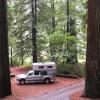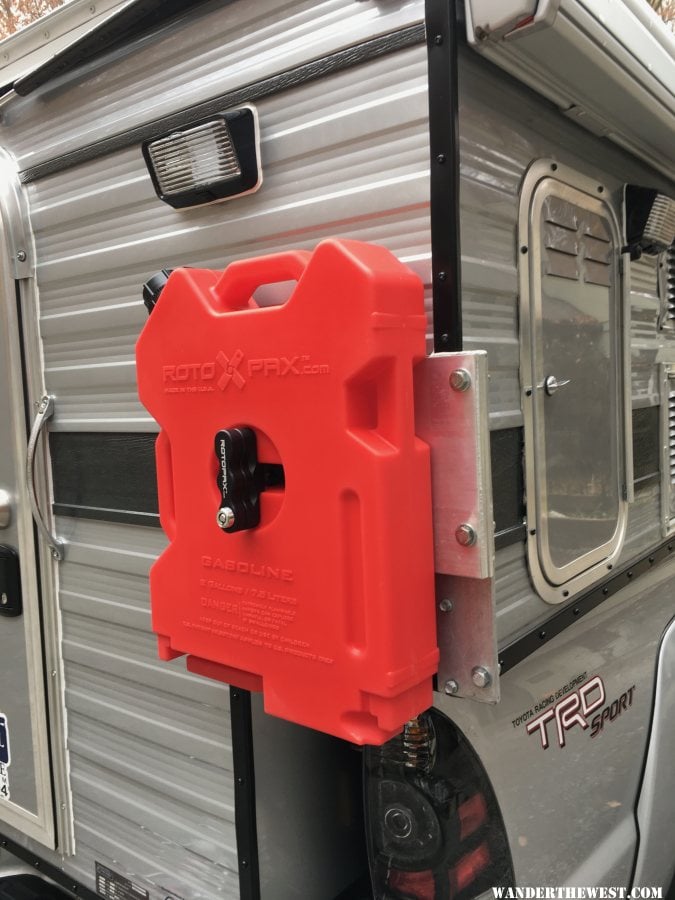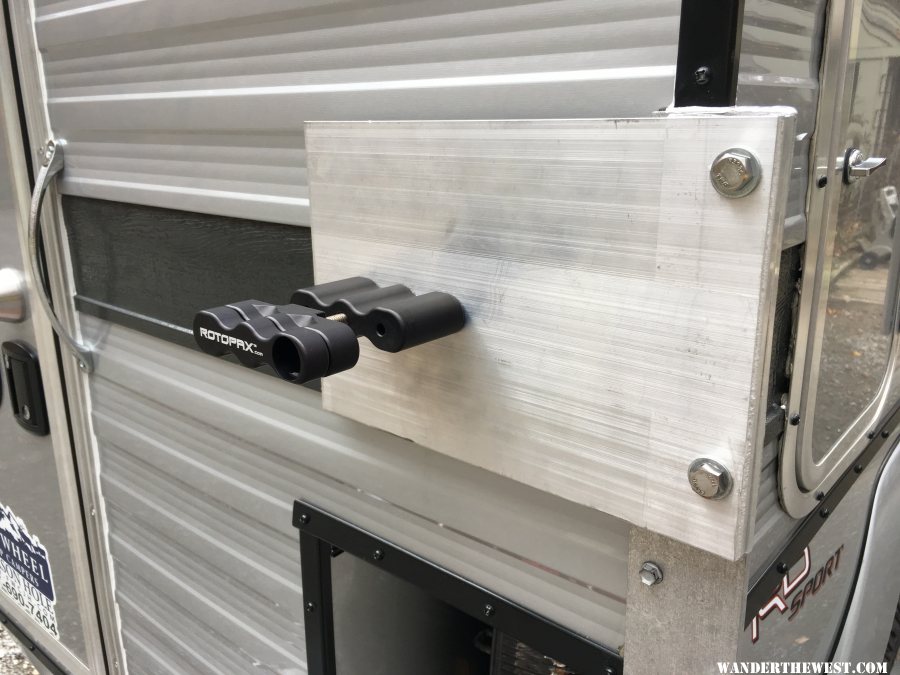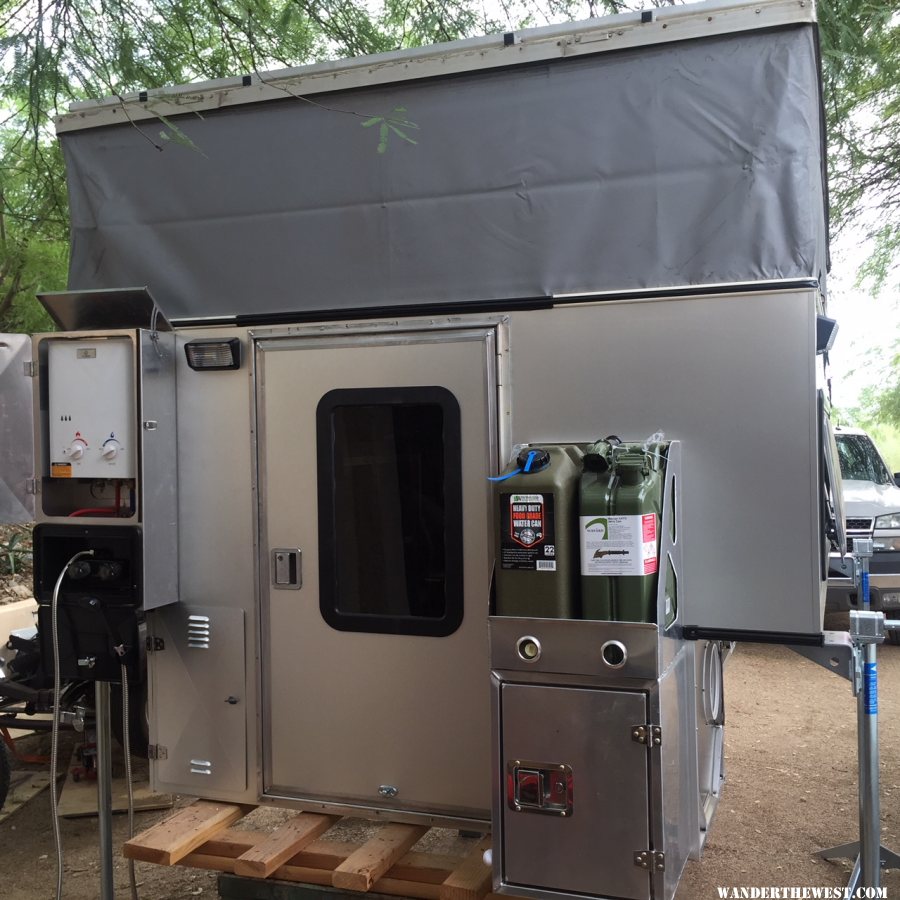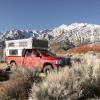I get roughly 23.8 lbs of liquid (6.8 lbs/gal for most liquid fuels), so guessing about 25-26 lbs for the fuel and the can. Really, really rough Rule of Thumb for Dynamic Loadings is 3 times the static weight, so around about 77 lbs swinging up and down and fore to aft and back on every bump. My NATO cans measure 13" wide by 6.375" deep, so that puts the centroid of the weight (mass actually), in the horizontal plane, ~14.5" from any corner.
That makes the Moment on the jack bracket something like: 77 lbs X 14.5" = 93 lbs-ft (can think of a Moment as a torque). What this means is that every bump that equals or exceeds 3 times the pull of Gravity is exerting at least 93 lbs-ft of torque on the jack bracket. This doesn't include any Impulse loading from the can not being completely full. That can drive the actual, extremely brief duration loading significantly higher (think: like hitting the end of that 14.5" long lever with a 3.5 lbs or less hammer).
Because I know all of this I know it would fail for me. It is the curse of an Engineering education. Hopefully my outlining it all doesn't mean it will fail for you too.
EDIT: DOH! moment (no pun intended). I calc'd the diagonal of the whole can, not the centroid location. I kept looking at that number thinking it was too big. So, the actual leverage length is roughly 7.25" which makes the Moment 46.5 lbs-ft instead of 93 lbs-ft. Still quite a large number, but it will increase the fatigue life over the 93 lbs-ft number.
Good lord..... Love that you have the ability to do the math, and I don't doubt its accuracy, but I'm struck by the thought that it must be a hell of a burden to face life from that kind of perspective. I'm no Engineer (though my job title was Fire Apparatus Engineer), but I've had quite a bit of experience in extreme off roading, and I've been amazed at what can fail when something is pushed to its limits, and I do agree that cantilever mounted items can be problematic. Mathematically and practically, eventually something will fail for sure, and as stated, the only question is when. And that can't really be answered due to innumerous variables for each vehicle, each situation, and each individuals locations.
So I wonder why triangulation isn't being used with these mounts to provide a third plane (or is it the second plane)? of strength. Example: If bracketry was fabricated to attach to both the jack mounts, and the to the camper body (specifically to the 3/4" plywood adjacent to the jacks), I would think the failure rate of jacks would be greatly reduced, or the time extended. But again, variables....
The other day at ATC, Marty was fabbing some aluminum plate to bolt through the plywood (added compressional strength) that would extend past the back wall of the camper to support an AT fuel from underneath, and then was going to bolt through the back wall through some framing tubing. But you could go to the jack bracket just as easily.
The problem I see with the jack brackets is that they are "screwed" in, as opposed to bolted through.
Anyway, just my two cents...... (or maybe a little more)
Edited by wcorbett, 09 January 2018 - 10:30 PM.





